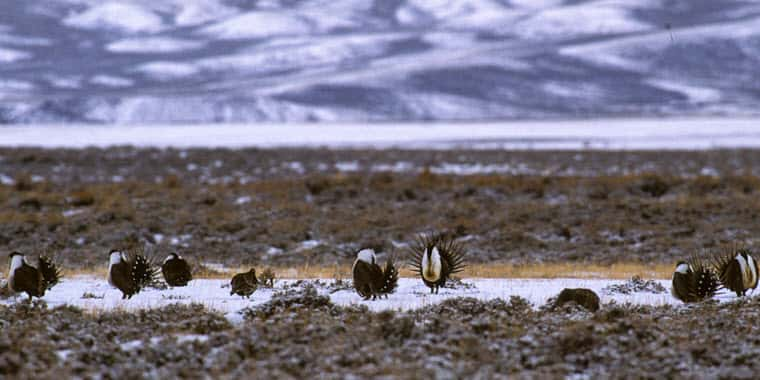Nine senators from western states are urging Senate leaders to continue an agreement to prohibit an Endangered Species Act listing for the greater sage-grouse in any upcoming end of year spending packages. This prohibition has been included in annual spending bill since 2015.
Wyoming Senators John Barrasso and Cynthia Lummis, North Dakota’s John Hoeven and Kevin and Montana’s Steve Daines joined in signing the letter sent to Senate Majority Leader Chuck Schumer and Minority Leader Mitch McConnell, arguing that state plans to manage the species are more effective than federal protections.
The letter points to the greater sage-grouse as a prime example of state-led species conservation. Eleven western states with sage-grouse habitat have established their own collaborative, science-based conservation plans. The plans are tailored to address localized landscape needs and encourage recover of the species. The plans were made with contributions from scientific experts, conservationists, federal officials, and local industry leaders.
The greater sage-grouse has consistently been the subject of litigation and listing petitions for years. Thus far, the U.S. Fish and Wildlife Service has found the existing combination of state-led strategies has been successful in preventing the need to list the species. There have been three listing considerations within a ten year period.
The letter from western senators comes as talks about potentially adding some sage grouse segments to the Endangered Species Act intensified again earlier this year. The U.S. Fish and Wildlife Service said in May that it would do a review of how it handles at least the bi-state sage grouse, a species that is considered to be a cousin of the greater sage grouse.
The agency’s decision came after federal judges struck down multiple rule changes that were made to ease back on sage grouse protections during the Trump administration. For example, a U.S. District Court judge in Idaho had overturned a phosphate mining project in southeastern Idaho because the federal government didn’t consider the phosphate mine’s impact on the species at the time.
The senators point to the fact that, each year the listing prohibition has been in place, funding for sage-grouse conservation has continued to rise. They that is “due to the commitment and partnerships of federal, state, and local leaders who take ownership and responsibility in the achievement of their individual plans.”
The letter concludes saying, “Species conservation is a gradual process, and conservation plans require time to be implemented without disruption in order to show results. States and local communities have invested years in the development and application of sage-grouse conservation. Continuing to provide for their expertise and on-the-ground decision-making has been indisputably proven as the best way to conserve the greater sage-grouse and rural communities alike. The continuation of a prohibition against ESA listing for the greater sage-grouse is vital for the long-term survival of the species.”
###


